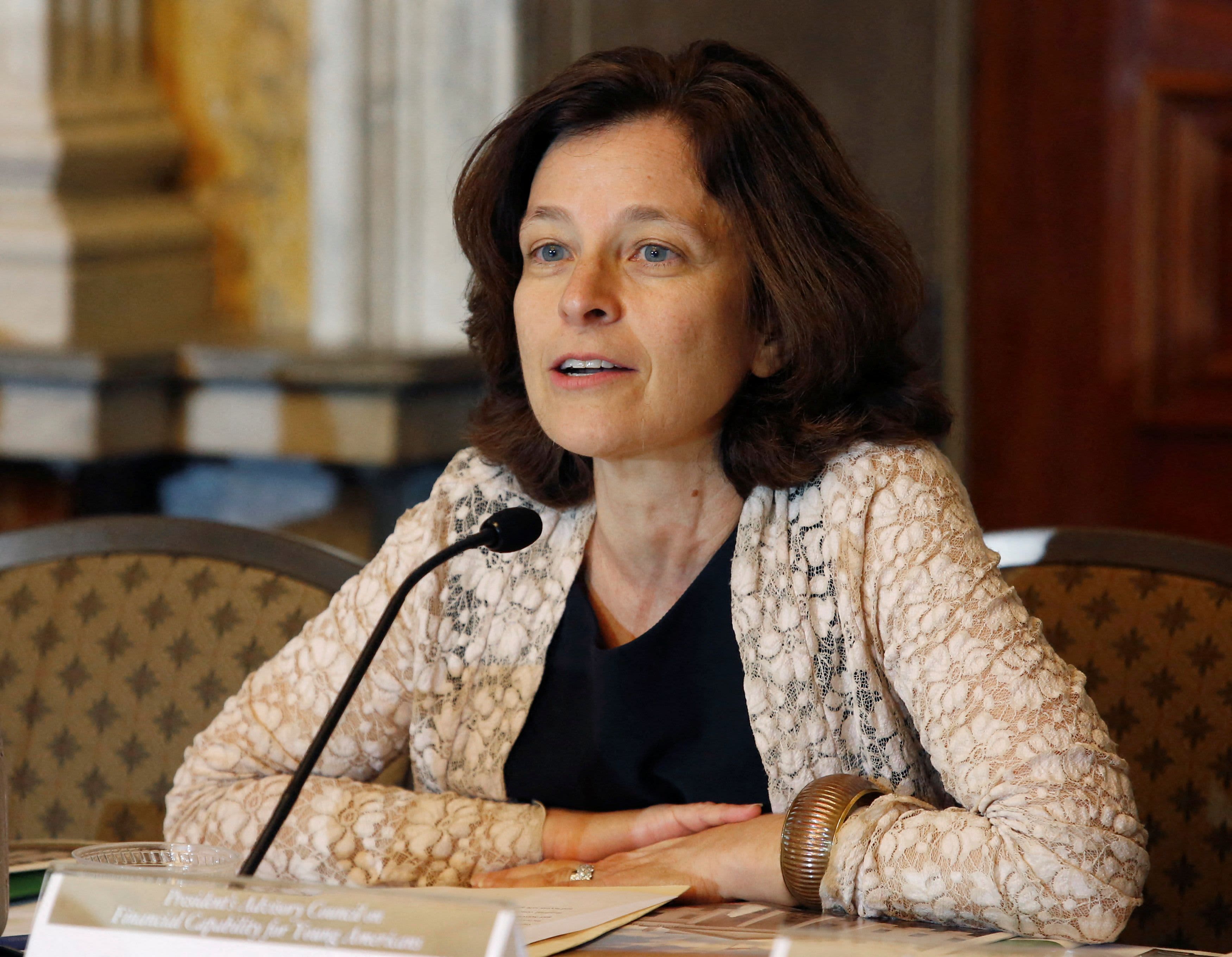Biden to nominate Sarah Bloom Raskin as vice chair for supervision at Fed; Lisa Cook and Philip Jefferson as governors

Sarah Bloom Raskin, in her role as Deputy Treasury Secretary at the Treasury Department in Washington, October 2, 2014.
Yuri Gripas | Reuters
President Joe Biden will nominate Sarah Bloom Raskin to be the Federal Reserve’s next vice chair for supervision, arguably the nation’s most powerful banking regulator, according to a person familiar with the matter.
Biden will also nominate Lisa Cook and Philip Jefferson to serve as Federal Reserve governors, according to the person, who asked not to be named in order to speak freely about private White House decisions.
Each nominee will in the coming weeks face questioning from the Senate Banking Committee, the congressional body in charge of vetting presidential appointments to the central bank. Should the Senate confirm their nominations, Cook would be the first Black woman to serve on the Fed’s board while Jefferson would be the fourth Black man to do so.
That committee on Tuesday held a nomination hearing for Fed Chair Jerome Powell, whom Biden chose to nominate to a second term. The committee held a similar hearing for Fed Governor Lael Brainard on Thursday, whom Biden picked to be the central bank’s next vice chair.
In choosing Raskin for the vice chair for supervision post, Biden looks to make good on Democrats’ promises to reinforce laws passed in the aftermath of the financial crisis and restore aspects of a rule named for former Fed Chair Paul Volcker that had restricted banks’ ability to trade for their own profit.
Raskin has experience at the Fed and served as a governor at the central bank from 2010 to 2014 before serving as Deputy Secretary of the Treasury under the Obama administration.
While Jefferson’s name had more recently come up in closed-door discussions to serve as a governor, Cook’s nomination was well telegraphed. CNBC reported in May that she was the top choice of Sen. Sherrod Brown, the Banking Committee’s chairman and an Ohio Democrat, to serve as a governor.
Cook is a professor of economics and international relations at Michigan State University. She is also a member of the steering committee at the Center for Equitable Growth, a progressive Washington-based think tank that counts several of Biden’s top economists among its alumni. She also served as a senior economist in the Obama administration’s Council of Economic Advisors.
Since leaving the government, Raskin has pressed the Fed and other financial regulators to take a more proactive role to address the financial risks posed by climate change. Raskin is married to Rep. Jamie Raskin, D-Md.
Former Vice Chair for Supervision Randal Quarles, who recently left the Fed, played a major role in reducing capital requirements for U.S. banks with less than $700 billion in assets and relaxing the Volcker Rule’s audit rules for trades made by JPMorgan Chase, Goldman Sachs and other investment banks.
Fed officials in favor of an easier regulatory stance argue the industry is well-capitalized and not in need of some of the more restrictive measures enacted in the wake of the crisis. Many Democrats, including Massachusetts Sen. Elizabeth Warren, have pushed back and said rollbacks leave the banking sector more vulnerable to shocks and liable to excess risk taking.
Inflation battle
The nominations come at a precarious time for the Fed, which has in recent weeks has started to wind down its easy-money policies in the face of recovering employment and the highest level of year-over-year inflation since 1982.
In times of normal economic activity, the Fed adjusts short-term interest rates to maximize employment and stabilize prices.
When the Fed wants the economy to heat up, it can cut borrowing costs to spur the housing market and broader economic activity as well as employment. But if it is concerned about an overheating economy or unruly inflation, it can raise interest rates to make borrowing more expensive.
In times of economic emergency, the central bank can also tap broader powers and purchase vast quantities of bonds to keep borrowing costs low and boost financial markets with easy access to cash. It did so in 2020 with the arrival of the Covid-19 pandemic, a move that worked to pacify traders and soothe companies concerned about liquidity.
Bond yields fall as their prices rise, meaning that those purchases forced rates lower. But ending those types of emergency-era liquidity measures — and the prospect of higher rates — can have the opposite effect on markets.
The release of the Fed’s latest meeting minutes earlier in January, which showed several officials in favor of cutting the balance sheet and raising rates soon, sparked a sell-off on Wall Street.




